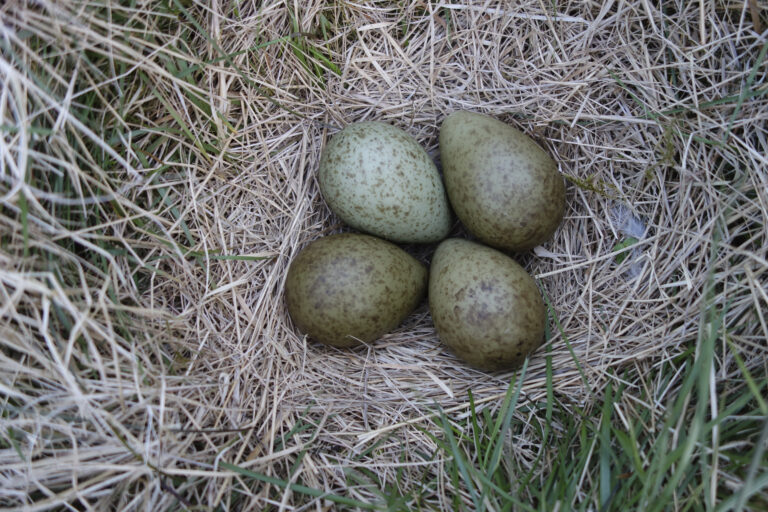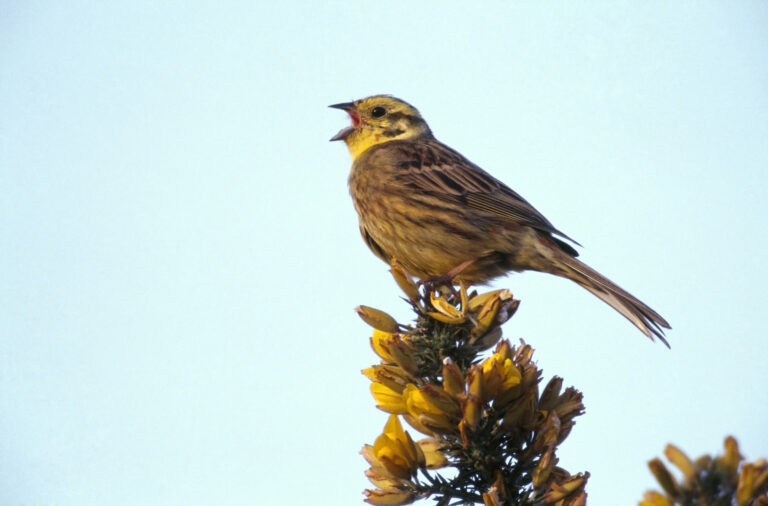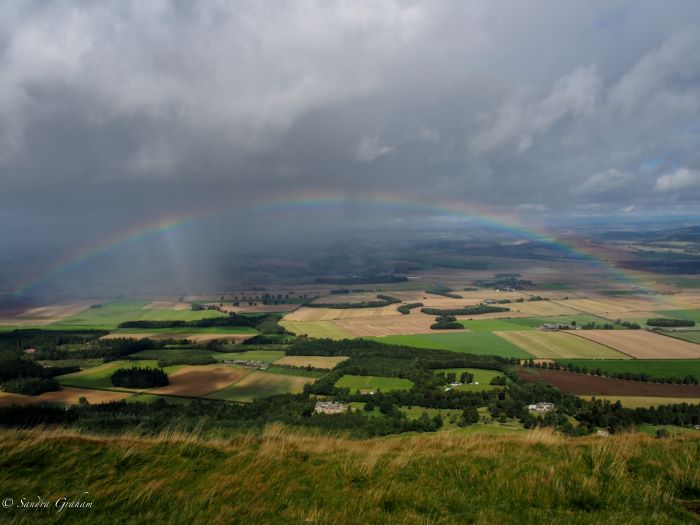This blog post was originally published by the Scottish Wildlife Trust.
Summary
- According to the newly published Biodiversity Strategy, “in Scotland, the evidence around the scale and nature of the biodiversity crisis is strong and continues to mount”. Targets to halt biodiversity loss by 2030 and meet net zero ambition need urgent action.
- The Scottish Government’s Vision for Agriculture, published in 2022, states a bold ambition for the sector to transform and become a global leader in sustainable and regenerative agriculture.
- Current agriculture support is changing through the Agricultural Reform Programme into a four-tiered model of support, but the Scottish Wildlife Trust questions if this is happening quickly enough to meet the Government’s own 2030 biodiversity target.
- This briefing explores opportunities under the Base Tier for improving biodiversity through the lens of riverbank management.
- We propose that mandatory requirements should be strengthened in the Base Tier, that clarity and purpose should be given on whole farm plans and that a higher proportion of the agriculture budget should be directed towards nature and climate friendly farming.
Introduction
Known across the world for its stunning topography, habitats and wildlife, it comes as a surprise to some that the evidence shows Scotland is amongst the earth’s most nature-depleted countries, with one in nine species at risk of national extinction. The Scottish Government’s commitment to reversing declines in nature by 2030 and restoring nature by 2045, alongside measures in the Scottish Biodiversity Strategy and accompanying Delivery Plan 2024 – 2030, recognise this grave situation.
We know agriculture is the second largest source of greenhouse gas emissions in Scotland, and with around 80% of Scotland’s land classified as agricultural, the sector plays a key role in both halting biodiversity loss and meeting the country’s net zero targets. We also know many farmers want support to help achieve these goals.
Farming has been in the headlines since the UK Government’s October budget. Changes to the agriculture budget and to the Inheritance Tax rules that apply to farmers have sparked angry protests from Holyrood and Orkney to Llandudno and London. Farmers and crofters face pressures from all angles, with confusion over taxation changes being the latest in a long line including extreme weather, inflation and changes in agriculture payments.
| “Farmers and crofters face pressures from all angles, with confusion over taxation changes being the latest in a long line including extreme weather, inflation and changes in agriculture payments.” |
Farming budgets no longer shielded
No longer under the certainty of the EU Common Agricultural Policy’s seven-year funding cycles, the agriculture budget is now subject to the same pressure and scrutiny as other departmental spending – from health and social care to education. Farmers and crofters are threatened by this exposure both directly and indirectly. For example, in 2022-23, before the UK Government’s recent changes to agriculture property relief rules, the Scottish Government had reduced the agriculture budget by £46m.1
There is a tendency when farming’s bottom line is under threat for battlelines to be drawn between farming and nature. The old adage, ‘farmers can’t be green if they’re in the red’, has resurfaced, as it did in 2022 when Russia invaded Ukraine and inflation soared. Calls then were made by some farming groups for Ecological Focus Areas, part of the Greening requirements in the Basic Payment Scheme, to be ploughed up.
Yet pitting farming and nature as two opposing forces is a false dichotomy: they go hand-in-hand. The Scottish Government recognised this in its Vision for Agriculture to transform how farming and food production is supported in Scotland, so that it becomes a global leader in sustainable and regenerative agriculture.
Farming and crofting can help defend and justify the agriculture budget by delivering more public goods, from nature restoration and emissions reductions to clean water and natural flood management. Yet whilst 85% of the Scottish public want more spending on farming to support methods that restore nature and tackle climate change alongside producing food, current Scottish Government plans for agricultural support do not adequately reflect this.
Developing the future of farm support
Scotland is in the process of pivoting away from the old framework provided by the EU Common Agricultural Policy. The Scottish Government’s Agricultural Reform Programme and Route Map is the programme for implementing the Vision for Agriculture and changes to agriculture policy – and is the replacement for the Common Agricultural Policy. The Route Map sets out the timescales, key dates and support available to farmers, crofters and land managers for implementing change, and the Agricultural Reform Programme is a list of proposed measures. Key proposals of the Agricultural Reform Programme and Route Map are that:
- the existing framework of support (i.e., the Common Agricultural Policy) will continue to 2025
- future support will be structured around four tiers
- from 2025, new conditionality on half of all funding will be delivered through the Base Tier
- from 2026, powers from the new Agriculture Bill will be used to launch the new Enhanced Tier
- Elective Tier and Complementary Tier will be introduced from 2027 including incarnations of Agri-Environment and Climate Scheme and the Farm Advisory Service.
Direct Payments will be retained in the Base Tier and Enhanced Tier (Tiers 1 and 2) which will take 70% of the farm budget. A further 11% of the budget will sit with the Less Favoured Area Scheme. Just 5% of funding is allocated to the Agri-Environment and Climate Scheme (Tier 3), which is where the big gains for nature and climate sit, with little remaining for key elements such as agroforestry, collaboration, support and advisory services (Tier 4).
There are opportunities across each Tier and across all farming systems for paying farmers and crofters for environmentally sensitive management. We focus on the Base Tier in this briefing.
Agricultural Reform Programme: Base Tier
The Base Tier is almost identical to the existing main payment scheme, the Basic Payment Scheme, and will remain in place until at least the end of 2027 with some additional requirements. Under the Basic Payment Scheme, in exchange for a payment based on the area of land which is actively farmed, farmers and crofters must comply with certain laws around animal and plant health and sustainable agricultural practices. These rules, called cross compliance, require meeting two sets of requirements: Good Agricultural and Environmental Conditions (GAEC) which aim to safeguard soils, habitats and landscape features, and Standard Management Practices which include practices on animal welfare and traceability, biosecurity, the use of pesticides and fertilisers, and conservation of designated sites.
‘Greening’ is another requirement of the Basic Payment Scheme and includes:
- protecting permanent grassland designated as environmentally sensitive grassland
- growing a minimum number of crops
- farming 5% of the farm’s arable area in a manner that promotes biodiversity – known as an Ecological Focus Area.
New conditions will be introduced to the Basic Payment Scheme in 2025 through basic habitat mapping, a prerequisite of the Whole Farm Plan and a revision to GAEC 6 which includes new requirements for peatlands and wetlands.
Around three quarters of payments to farmers are through the Basic Payment Scheme, with over 17,300 claimants covering around half of all Scotland’s land. As a ‘broad and shallow’ scheme it dwarfs the targeted Agri-Environment and Climate Scheme which receives just 6-8% of the farming budget. Evidence is clear that the direct payments made through the Basic Payment Scheme are an inequitable and inefficient use of public funds, including the Scottish Government’s own assessment, which found that direct payments made under the Common Agricultural Policy over 2014-2020 reduced innovation, development and growth and had little environmental benefit and in some cases a negative impact. This is despite the inclusion of Greening requirements.
Given the above it is astonishing that direct payments look like they are here to stay. We will continue to argue for a more sensible approach, but in the meantime, the Base Tier must work a lot harder than it does at present for nature and for climate. Tinkering at the edges will not deliver the Scottish Government’s Vision for Agriculture, provide value for money or get public support.
Importance of riparian habitat
Scotland’s streams and rivers cover an amazing 125,000km (12.5 times the length of the country’s coastline), and improving riparian habitat reaps huge benefits for wildlife and people. Riparian zones link land and water by transporting nutrients and supporting food chains, providing vegetation which many species rely on for habitat (e.g. otter, pollinators, osprey), food (e.g. beaver) and spawning (e.g. Atlantic salmon), as well as shelter for grazing livestock.

Healthy river systems can provide a wealth of benefits for wildlife and people.
Besides providing homes for all kinds of species, functioning riparian habitats (from woodlands and hedgerows to heathland, scrub and bogs) help alleviate flooding, store and lock-up carbon, improve freshwater quality, sustain soils and provide health and wellbeing benefits for people. Riverbanks are crucial to meeting Scotland’s water quality targets, yet riparian zones face pressures including from pollution, habitat destruction and invasive species. The Scottish Environment Protection Agency performed a survey of over 44,000 km of riverside habitats and found that 56% of these areas were of ‘poor’ quality, with little to no tree cover or complex vegetation.
Our proposals for making Base Tier more effective
In recognition of their importance in biodiversity and climate change adaptation and mitigation, riparian management and protection is included in existing Scottish regulation and agriculture payment schemes at all levels and looks to be included in future support programmes. As it stands, we believe the Base Tier needs to be strengthened so it works more effectively to improve biodiversity. Below we set out some proposals for how this could happen by strengthening the conditions in cross compliance and greening for improved riparian management, with more general proposals for the Base Tier to improve the whole farmed environment through the Whole Farm Plan and the budget distribution between Tiers.
Conditions: Good Agricultural and Environmental Conditions, Standard Management Practices and Greening
As direct payments for the area of farmed land are staying to 2027 and possibly beyond through the Basic Payment Scheme and then the Base Tier, conditionality (i.e. the requirements that are attached to the payment) should be well upwards from the current proposed 50% to 70% of payments. Additional changes can and should be made to Good Agricultural and Environmental Conditions, for example, to make them achieve more for climate and nature.
A precedent has been set for expanding and improving Good Agricultural and Environmental Conditions with the addition to GAEC 6 (maintenance of soil organic matter) on wetlands and peatlands from 2025 which will prohibit certain activities from being carried out on peatland and wetland areas. Our suggestions for strengthening the conditions of the Base Tier draw on and expand the conditions we proposed in our Land Stewardship Policy.
Greening requirements, including Ecological Focus Areas, could also be better designed. For example, rather than equal weightings across all hectares there could be higher weightings to incentivise actions for nature and climate and regenerative farming across all farming systems.
Specifically for riparian management, we propose making GAEC 1 (buffer strips along water courses) more effective by expanding the requirement for the uncultivated area from its current 2 metres upwards. There is a substantial and growing body of evidence that creating three-dimensional riparian buffer zones which include more complex vegetation, height (i.e., through trees) and width (to at least six metres) improves almost all ecosystem functions, from soil health to reducing thermal stress to aquatic life – as well as improving farm business.
We called for an increase to six metres in our Land Stewardship Policy and maintain that view. Indeed, in England’s basic tier scheme, the Sustainable Farm Incentive, buffer strips must be between 4-12 metres. Beyond this, for managing nutrient pollution of water courses, a recent assessment of nutrient retention in buffer strips suggests a 10 metres minimum width. Likewise, for wildlife habitat, a minimum of at least 10 metres is suggested.
Riparian buffer strips can qualify as Ecological Focus Areas under greening requirements, yet grazing is not permitted due to Ecological Focus Area specifications at the EU level not enabling management prescriptions to have additional restrictions (e.g. to only permit grazing outside of the bathing season). Restricted grazing can increase the biodiversity value of buffer strips by enhancing plant diversity and preventing scrub encroachment and should therefore be allowed within the Base Tier.
Strengthening the Base Tier requirements on riparian management would require actions from a greater number of farmers than the current Ecological Focus Areas do, for example by ensuring that low ground dairy farms do more than they do currently.
A requirement could also be added to GAEC 4 (minimum soil cover) that winter stubbles must be left unsprayed to improve value for wildlife.
We propose reinstating Good Agricultural and Environmental Conditions requirements to:
- prevent wind erosion and soil capping
- manage use of manures and slurries to meet crop needs
- use machinery on land appropriately (e.g. not when water standing on surface or soil saturated)
- avoid overgrazing
- prevent application of lime on semi-natural habitats used for rough grazing.
There are several codes which we suggest could be appraised and potentially included in the Base Tier conditionality including:
- the Prevention of Environmental Pollution from Agricultural Activity Code should be mandated within a Good Agricultural and Environmental Conditions, for example, by expanding GAEC 3 (the protection of groundwater against pollution)
- updating and making mandatory the Code of Practice on the Use of Plant Protection Products and including it in Standard Management Practice 10 on the use of plant protection products.
Whole Farm Plan
The purpose of Whole Farm Plans and how they will be used in future in agriculture payment schemes is unclear. Whilst we support the principle of having a holistic management plan for the whole farm or croft, at the basic entry level there are many management actions which can be applied without detailed ecological knowledge or the need for a detailed biodiversity audit, from riparian buffers and hedgerow maintenance to appropriate grazing regimes.
There needs to be a clearer articulation of the purpose and intended outcomes of Whole Farm Plans to bring industry alongside, and with that intent, a more purposeful timeline. The requirement to have only completed a basic habitat map by May 2028, just 18 months from the deadline of halting of biodiversity loss by 2030, is sending a weak message. It is not coherent with the new Biodiversity Strategy which states “Delivering a nature positive future for Scotland requires a multi-sectoral, whole of society approach.”
Budget
A recent analysis of how much funding is needed across the UK to deliver nature and climate commitments through the management of farmland puts the figure for Scotland at £1.8 billion per annum for the next 10 years. We want to see the Scottish Government rethink its decision on the funding allocation of 70% for the Base Tier and Enhanced Tier so that the weighting is moved upwards into Tiers 3 and 4.
We would also like to see an increase in funding for the Agri-Environment and Climate Scheme to £55 million, equivalent to its peak in 2017 (the current budget is around £25 million) and ring fence a multi-year budget for farm support in Scotland. By 2028, at least 75% of the farm budget should be spent supporting nature and climate friendly farming if the Scottish Government’s Vision for Agriculture is to be achieved.

Riparian woodlands act as an effective buffer between watercourses and agricultural land. © Maximillian Stoll
Next steps
This briefing provides some suggestions for how the Base Tier could work harder for riparian zones and wider biodiversity. As a broad and shallow scheme, it is the way most farmers interact with agriculture policy and payments and has the lion’s share of the budget. In our next briefing we will turn our focus towards the Enhanced Tier and the Elective Tier. This will dig deeper into riparian management through the current agri-environment scheme, Agri-Environment and Climate Scheme, and the proposed measures for its successor. It will include a spotlight on managing invasive species in riparian zones, as well as looking at riparian woodlands through the Forestry Grant Scheme.
This briefing was written by Ellie Brodie in collaboration with the Scottish Wildlife Trust.
Ellie Brodie is a policy analyst and researcher with a background in environment, agriculture and rural development policy. She is the Director of Grounded Insight and is currently working with colleagues at Scottish Wildlife Trust to provide insight on developments in agriculture policy in Scotland.




